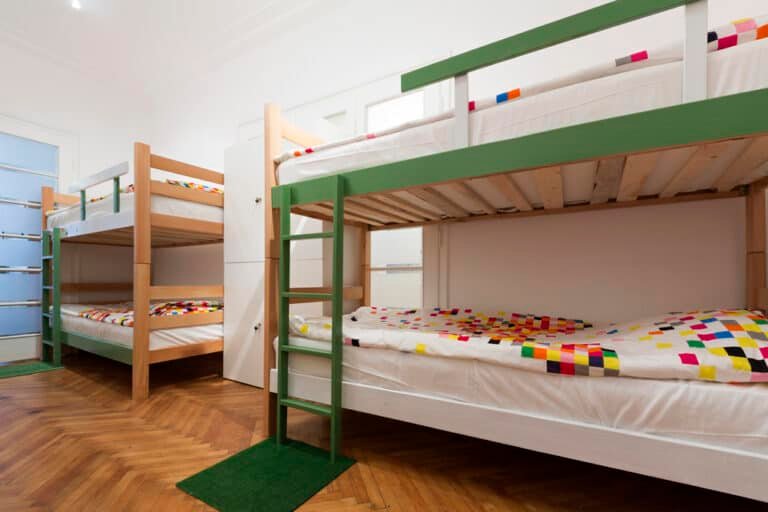How Does a Murphy Bed Work? (Everything You Need to Know)
Homebody Forever is reader-supported. We may receive a commission if you make a purchase through a link on this post.
Murphy beds, also known as wall beds or hideaway beds, are generally simple to operate.
\However, given that Murphy beds can differ in design and are often custom-made, their installation and operation can sometimes vary.

How exactly do Murphy beds work?
Seeing that Murphy beds are designed to fold against a wall or into a space, they have specialized hydraulic or spring-loaded mechanisms, locking mechanisms, and hinges to make them work safely and effortlessly.
What allows a Murphy bed to be easily lifted and lowered?
Depending on the design, the mechanism that allows the Murphy bed to be lifted or lowered can be complex or simple.
A spring lift Murphy bed and a piston Murphy bed have heavy-duty mechanisms allowing a single person to lift and lower a bed.
The weight of the bed, the quality of the mechanisms used, and the person’s physical strength will all affect how simple the lifting and lowering of a Murphy bed is. In some cases, you will want to have assistance or some bed support.
Most Murphy beds come with special instructions from the manufacturer on how to open and close them. Please read these carefully, especially if you have ordered a custom Murphy bed design.
Spring lift Murphy beds
A spring lift Murphy bed utilizes heavy-duty springs (attached to the sides of the bed) to help control the bed’s weight and tension when opening and closing. The larger the mattress, the more springs are required.
When lowering a spring lift Murphy bed, you would typically need to release the locking mechanism, allowing the rings to unwind and slowly and safely drop the bed into a horizontal position.
When you need to lift the bed back against the wall, the springs automatically wind back up, causing the bed to rise. Generally, you can then re-lock the bed using a locking mechanism.
Piston Murphy beds
Piston Murphy beds use a hydraulic mechanism to control the bed’s weight and speed when it opens or closes. Depending on the bed size, the bed may need a couple or multiple gas or air-pressurized pistons.
To lower the Murphy bed, you must unlock the safety mechanism first. Then, the previously compressed pistons will expand and lengthen, allowing the bed to move easily into a horizontal position.
Piston Murphy beds generally simplify the process of lowering even a King-sized bed and are much quieter than spring mechanisms.
When you lift the bed back against the wall, the pistons will slowly and smoothly compress, raising the bed back into an upright position. There should also be a sturdy locking mechanism to hold the bed safely in place.
How does the Murphy bed stay down when in use?
The tension from the piston or spring system, as well as the weight of the sleeper, will aid in keeping the bed in place. The piston’s air, gas pressure, or strong springs keep it lowered and stable.
We recommend using a locking system to ensure that the bed does not rise when you sleep. Most modern Murphy beds will come standard with this safety feature.
If your bed has a spring mechanism, it may need to be mounted to the floor to ensure it remains stable and comfortable when sleeping. You will need permission if renting, as the mounting may damage your flooring.
How does the Murphy bed stay up when stored?
Once again, the springs or gas/air pressure will aid in pushing your bed up against the wall.
Murphy beds often also have corner brackets and hinges to keep the corners of the bed in an upright position. A locking mechanism is also essential to ensure the bed stays up, does not accidentally unfold, and is securely locked.
Added steps before lowering a Murphy bed
Several types of Murphy beds are available. Although their mechanisms are similar, you may need to complete a couple of extra steps before opening or closing them.
Your horizontal, vertical, and cabinet Murphy beds need a clear space in front of them before you can lower them into a flat bed position.
If you own a murphy bed desk, you will likely need to clear any desk items before lowering it. Similarly, a sofa Murphy bed must be removed from any throws or cushions before its bed conversion.
What affects how Murphy beds work?
Installation and instructions
Having your Murphy bed installed correctly and by a professional is highly recommended. Both safety and ease of use can be significantly affected by a mattress that is incorrectly installed.
To avoid damaging your spring or hydraulic mechanism, always follow the manufacturer’s instructions on operating your specifically designed Murphy bed.
Damage and wear and tear
If your Murphy bed is not opening or closing correctly, making loud creaking noises, or the springs look visibly damaged or rusted, this indicates that the spring may need replacing.
Fortunately, the spring lift Murphy bed’s springs tend to be long-lasting, relatively easy, and inexpensive to replace.
The same applies to a piston Murphy bed. The piston mechanism is typically a quiet system, so if you hear any noise or the bed is not lowering or raising as smoothly as usual, you may need to have the mechanism seen to.
Sadly, if there is a problem, you will need to replace the entire piston mechanism, which can be costly. Piston mechanisms also tend not to last as long as a spring lift Murphy bed mechanism.






